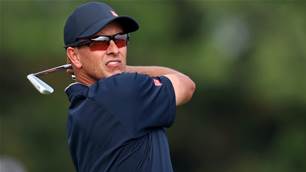Duff & Phelps, A Kroll Business, the world’s premier provider of governance, risk and transparency solutions, today released the second edition of the Professional Golfers’ Future Career Value Study, a ranking of male professional golfers by their expected future earnings.
The study, which was conducted by the firm’s Valuation Advisory Services practice, evaluated over 1,000 professional golfers and ranked the top 60 current players based on their Future Career Value (FCV), which reflects the present value of golfers’ projected tour winnings, endorsement income and estimated earnings from the PGA Tour’s newly formed incentive plan, the Player Impact Program (PIP). While Phil Mickelson’s recent victory at the US PGA Championship at age 50 makes him the oldest golfer to win a major and proves golfers over 50 can still have significant value both on and off the course, Duff & Phelps has chosen to focus on players’ value through age 50.
Five Australian golfers were ranked among the top 60 leaderboard, including Cameron Smith (27th), Jason Day (32nd), Adam Scott (40th), Marc Leishman (42nd) and Lucas Herbert (60th) – with a cumulative FCV of $223 million (mn).
Northern Ireland’s Rory McIlroy topped the leaderboard for the second year in a row with a projected FCV of $401 mn, about a third more than US golfer Justin Thomas, the next-ranked golfer who once again claimed the second spot.
Eight of the top 10 FCV leaderboard were also in the top 10 last year, with Viktor Hovland and Collin Morikawa being the new entrants. The total FCV of the top 10 increased by 14% from $1.89 billion (bn) last year to $2.15 bn, primarily due to the addition of the PIP. Launched in April 2021, the PIP recognises players’ brand power for the sport and ability to create value on and off the course – much like Duff & Phelps’ FCV study – and splits a $40 mn bonus annually among the top 10 players with the highest “impact score.”
“We’ve found that performance metrics are only part of the equation and as the PGA Tour’s Player Impact Program suggests, the brand power professional golfers are able to build is a big factor in driving a player’s value."
The study found that brand power plays a critical role in FCV, as only one-third of professional golfers’ earnings will come from tournament winnings over their careers, with the rest coming from endorsement deals. This finding, paired with the bonuses handed out through the PIP, highlights a potential divergence between current top performers and the sport’s top earners. For example, Tiger Woods is unlikely to play this season due to health issues, yet still draws high fan and sponsor engagement, making him No.9 on the FCV leaderboard and a beneficiary of the PIP.
Early success continues to be a strong predictor of long-term tournament winnings and lucrative and sustained endorsements. Players that ranked in the top 10 OWGR by age 22 outperformed those that reached the top 10 later in their careers.
“We’ve found that performance metrics are only part of the equation and as the PGA Tour’s Player Impact Program suggests, the brand power professional golfers are able to build is a big factor in driving a player’s value,” said Mark Mondello, Valuation Services Managing Director and Global Sports and Entertainment Leader at Duff & Phelps. “Despite what may happen on the links, it doesn’t erase earnings potential. Ultimately, it’s just as important to create value for the sport off the course as it is on the course.”
While US golfers claim two-thirds of the value in the FCV top 10 leaderboard and 53% of the top 60, global representation remains strong. Over half (55%) of professional golfers come from outside of the US, representing 18 other countries and demonstrating a game long dominated by the US is no longer confined to just the States.
Related Articles

Scott in Oakmont hunt with ‘old-man’ golf

McIlroy triumphs at Pebble Beach as Aussies fall short













